Worm infestation in children – one of the most common and under-estimate the dangers of disease. Helminths in children cause not only nutrient deficiencies in the body, but become the cause of allergic reactions, poisoning, chronic, decreased immunity, the diseases and injuries of the organs of the gastrointestinal tract. The signs of parasitosis not develop immediately, the time of the illness may be asymptomatic or with expressed clinical and determined that when the analyses in the laboratory.
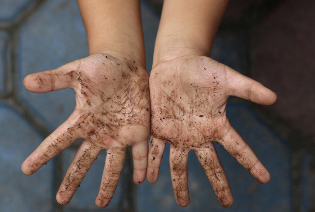
The prevalence and types of de-worming
It is considered that the helminthiasis, the infestation by worms of the earth are more and more diseases are specific to people from social backgrounds below average, living in unsanitary conditions, often by contact with infected animals or soil. However, according to statistics, only in the european countries helminths are detected during the examination of every third patient.
In nature, there are more than 300 species of helminths, more than 70 species widespread in Russia, the other can enter the body of the man during a trip in an exotic country. Among all species of helminth parasites, capable of existing in the human body, there are three groups:
- nematodes are related to the round helminths, some of the most common parasites in the small (pinworm, whipworm, Trichinella, ascaris);
- band (flat) relative to a cestode (different types of tapeworms, the tapeworms and Echinococcus);
- parasites of gills or trematodes, becoming the cause of opisthorchiasis, fascioliasis, chistosos, paragonimoz, etc
In most cases, helminth parasites and multiply in the departments of the intestine, however, the eggs and larvae can be distributed with the flow of blood by the various organs of the body. Most often suffer from the surrounding organs of the gastrointestinal tract: the liver, the gallbladder, but parasites can colonize muscle tissue, the lungs, the brain.
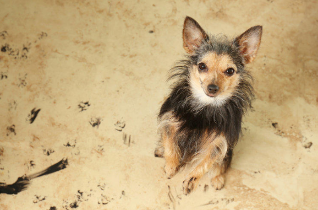
Helminth infections: the way of contamination
The means of infection by worms of the earth depend on the characteristics of their development cycle. For some groups of helminths, the human being is the "master", in the body in which they live and breed, for others, an intermediary. In some cases, parasites, you need to the maturation of eggs in the soil or under other conditions. But the basic rule of protection against the infection is hygiene, the condition, which, in childhood is not always.
The age of the child – a period where sustained immunity is not yet formed, which greatly increases the likelihood of infection parasitosis. The desire to try the taste of the, multiple contacts with soil, sand, other elements increase the probability of penetration of the eggs of helminths in the body of the child.
The most common helminth parasites – pinworms and roundworms – are transferred on the hands, can stay on everyday objects (door handles), enter the interior of the body with the food (poorly washed, berries, herbs, vegetables). Also a risk of spread of worms in case of contact with an infected person or a pet or the existence, in the neighbourhood with them.
Pinworms are among the helminths, causing reinvasion: itching, which causes the pinworms female in the process of racking of eggs to the outside of the anus, with a sick touch, rub, scratch the surface and distribute the eggs of the parasites to the under-clothing, linens, clothes, objects, surfaces. When re-ingestion of eggs remaining on the hands or the bed, reinvasion, the self-contamination of the patient. Primary infection in children when it occurs most often in schools, on playgrounds, in public places the smallest.
What are the factors that increase the risk of infection helminths?
- Non-compliance with hygiene of the hands: move the washing of the hands after the return to the street, persons, toilet, prior to any meal.
- The habit of biting nails, sucking her fingers, to hold in the mouth of various objects (pencils, pens, toys, etc).
- Have a pet, attending the street: even if timely anthelmintic therapy dog and the cats may carry eggs of worm, backed up to the street on the legs, the wool.
- Non-compliance with the rules of processing of vegetables, fruits, berries, vegetables before you eat them.
- The low level of hygiene in the house: the wearing of shoes in the street, late, the washing of floors, etc
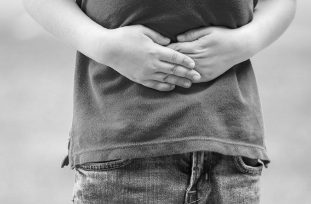
Intestinal worms in children: a variety of symptoms and the treatment of helminths
Many species of parasites for a long period of time does not contribute to explicit clinical eliminare: the goal of the parasite exist, to not be noticed by the master-carrier. So cheers to the symptoms of the helminth infection we can note that in the case where the multiple infection (initially or due to the length of the period) and/or in children, decreased immunity, there are co-morbidities, on the bottom of which helminth infections are manifested more clearly. A situation of contamination of exotic species of parasites causing a reaction of the body.
The common signs of worms in children:
- increase in appetite without increase of the mass of the body;
- enhanced by saliva;
- the manifestations of dyspepsia in the bowel, flatulence, chair unstable, nausea, pain in the region of the stomach, right hypochondrium, spasm of the intestine;
- dizziness, headaches, fatigue;
- a tendency to allergic reactions, which has not been observed previously, or manifestations of allergy;
- sensitivity, irritability, sleep disorders, attention, memory, intoxication-related waste of helminths;
- brittle, hair loss, flaking nails during the development of beriberi and iron deficiency;
- frequent inflammation of the sinuses (sinusitis, sinusitis, pharyngitis, etc), the genitals, especially in girls, due to the anatomy of the proximity of the vagina and the anus.
During long helminth infections in children suffered from a delay in the age of standards in the growth, weight, development, the violation of the activity and of the disease the gastro-intestinal tract, the symptoms of intoxication, severe, anemia, allergies, frequent respiratory problems, bacterial and viral etiology neurological of the deviation.
The first symptoms usually show up after 2-4 weeks after the achievement of eggs of helminths in the body. They vary according to the amount of noise, the level of protection of the force and of the state of health of the child, as well as on the species of helminths. As well, the pinworms cause itching at night in the area of the anus, which contributes to sleep disorders. When toxocarosis characteristics are cough, without any signs of respiratory illness, febrile status, are attacks of suffocation and allergic reactions.
The widespread belief that bruxism, grinding teeth in a dream – a sign of the presence of worms in the body, will challenge scientists and doctors. The phenomenon of bruxism related to peculiarities of the nervous system of the man. Although helminth parasites, particularly pinworms can disrupt sleep and promote the neurosis of the child, the bruxism is not a confirmation parasitic infestations. The treatment of this phenomenon are the neurologists and dentists.
During long helminthiasis all people develop a clinical picture of intoxication.
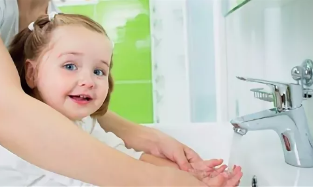
The diagnosis helminth
In most cases, helminth infections in childhood are diagnosed through annual preventive examinations of the stools of the eggs of the worm. However, this is not the most reliable method: in the presence of symptoms and negative of the analysis it is necessary to remember that all types of worms can be defined in the same way. The species that lay eggs, can also avoid the detection, in laboratory testing, as well as the frequency of reproduction may not coincide with the time of the analysis. It is also the case, when the body is one or more individuals of the same sex, are not capable of reproduction, but are harmful for the life-cycle.
Analyses of cala, it is recommended that studies be carried out in 2-3 weeks. In the list of reviews includes an analysis of the presence of the eggs of the worm and scraping on enterobiasis. Suspect the presence of helminths you can also on the results of blood tests: a high level of eosinophils in combination with a reduction of hemoglobin in most cases means the presence of parasites in the body.
To refine the diagnosis may apply to the biological research of phlegm, bile, urine, coprogram fecal masses.
To refine the diagnosis in cases of suspicion of Echinococcus explore the organs of the peritoneum, ultrasound and/or spokes of the method. Opisthorchiasis is diagnosed by analysis of the contents of the intestine and duodenal remote sensing.
Specify the type of parasite and the damage to the body help the immunological. After a precise diagnosis, you choose a method of therapy.
Drug-to-drug ways of treatment of helminths in children
The treatment for helminth infections is based on two axes: to get rid of parasites and detoxifying of the body, the reduction or the upgrading of existing damage of helminth infections.
To reduce the severity of symptoms of the poisoning are named supplements of vitamins (B, C), iron, vitamins and minerals complex, the blood glucose, the rate of infusion gemodeza, etc, In some case illustrates the use of diuretics, antihistamines. When the defeat of the heart muscle, liver tissue may apply hormonal of the tool.
As a maintenance treatment prescribed chelating agents, which exhibit antibiotic wastes parasites, the enzyme preparations to improve the process of digestion and the functioning of the organs, etc
In all helminth infections are not very recommended the use of medicines vast in children. The drugs, causing the death of parasites, impact on the human organism and, therefore, the selection of a drug and its dosage must be approached with caution.
The house and traditional methods of getting rid of earthworms is not recommended because of the lack of evidence and the possibility of measuring with precision the assay and the likely effect on the child's body.
The principles of treatment for helminth infections
In most cases, when the treatment of helminthiasis of a member of the family of treatment, you should pass all, living on a territory of adults and children. This refers not only to the highly contagious askaridoza, but also to other species of helminths. Medicines for every member of the family also chooses the doctor according to the age and state of health.
If in the house there are pets, they necessarily spend an anthelmintic treatment, independently of time after the holding of the prevention.
Inside, where the patient is a child, you need to make the plan for the daily hygiene of the household, preferably at the time of treatment, removing carpets, stuffed animals, blankets. Bed linen and linen for the body, personal towels to change as often as possible (shorts – twice a day), after washing all the clothes should be neatly ironed.
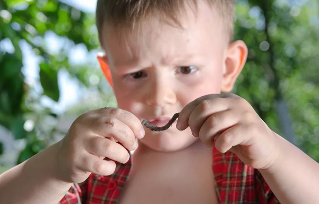
It is necessary to monitor compliance with the rules of hygiene: wash hands after each visit to the bathroom, back to the street, use only personal towels briefly to cut the nails. Without respect for the rules of the therapy can be ineffective due to the presence of sources of contamination surrounded by a patient.
The prevention of infection by worms of the earth
The measures of prevention are first include the rules of personal hygiene. The more often the eggs of the worm are transferred into the oral cavity with the hand, and hand-washing can prevent most infections.
Other measures of prevention are the following:
- rigorous (at least 2-3 minutes under running water) - wash berries, leafy green vegetables before eating, if one considers the consumption in the raw state;
- a long heat treatment of the fish river (40-60 minutes) before being eaten;
- delivery of preventive anthelmintic therapy in domestic animals;
- the general cleanliness in the home in accordance with health standards.




































